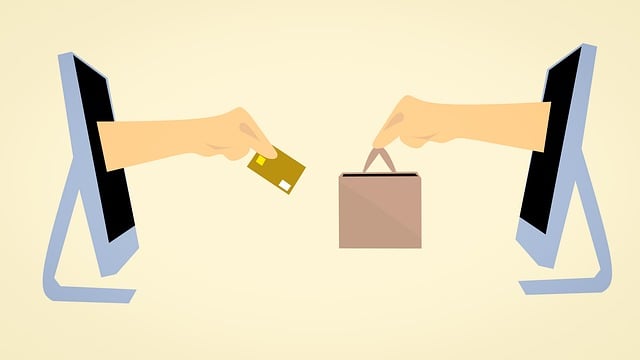Soaring B2B marketplaces, powering India’s digital economy
As India’s economy is growing and leaping ahead, a significant portion of this growth will be driven by the digital economy. So far, the growth in the digital economy has come from consumer digitization. However, India’s share in online B2B sales is less in comparison to other nations.
But it is expected that by 2030, a large portion of the digital economy will come from business digitization and online transactions that are business-to-business (B2B) online marketplaces.

Image Source: Pixabay
Business-to-business (B2B) e-commerce in India is gradually increasing. It accounted for an estimated 1% of the aggregate B2B market in 2022. With the MSMEs (micro, small, and medium enterprises) in India rapidly going online, they are increasingly buying and selling their products through online business-to-business (B2B) marketplaces. As per the report by Bessemer Venture Partners, India’s online B2B marketplaces could grow to become a $200 billion market opportunity by 2030.
The share of online B2B sales in India is less, when compared with the share of online B2B sales in other countries. In 2022, the share of online B2B sales in China was about 25%, followed by the UK (20%), and the US (18%). However, the B2B marketplaces in India have immense growth potential and the growth is likely to be driven by a predominantly unorganized B2B economy and fragmented supply chains in the country.
Emerging Opportunities
It is being observed that in the realm of B2B marketplaces in India, further three kinds of opportunities are unfolding. These are:
(1) Product marketplaces
(2) Service marketplaces, and
(3) Marketplace infrastructure start-ups
The B2B product marketplaces are full-stack online marketplaces. They not only connect with buyers and sellers of physical goods but also manage the entire transaction. They provide various services, like assortment, quality assurance, and logistics. These are usually vertical-specific in sectors. For example: construction materials, agriculture, chemicals, fashion, consumer electronics and jewellery. They can also be domestic and/or export-oriented.
The B2B services marketplaces are also full-stack online marketplaces, but they connect businesses with service providers such as freelancers, consultants, and agencies. They operate in verticals like marketing and sales, IT, recruitment and HR (human resources).
The B2B marketplace infrastructure refers to the technology platforms and tools related to payments, logistics, warehousing, etc. These marketplaces enable companies to build, assist and/or operate B2B marketplaces. Some companies may have a marketplace and infrastructure.
For instance, a B2B start-up may begin with a B2B marketplace and thereafter it may either create its own SaaS (Software-as-a-Service) product for its customers or draw in a SaaS player. Another company may start with a SaaS product and then build up a B2B marketplace over it.
What is driving the growth of B2B online marketplaces
The key drivers for the growth of B2B marketplaces in India are online penetration, developed digital infrastructure, and favourable regulatory policies.
Increasing digitization is pioneering the rapid growth of the B2B marketplace in India. Over 750 million people in the country have gone online. According to a report titled “The Emergence of B2B Marketplaces in India”, by venture capital firm Bessemer Venture Partners, in 2022, India had over 60 million MSMEs and the majority of them have adopted technology in some form. Of these 60 million, only 10% of MSMEs (six million) currently engage in buying and selling online. About 25% (15 million) of MSMEs are expected to transact on online marketplaces over the next four years.
Another factor driving the growth of the B2B marketplace is the development of payment infrastructure. The development has visibly transformed B2B transactions in the country. Businesses are availing benefits of a fast, secure, and convenient way of transacting with suppliers and customers. Some other advantages offered by the development of payment infrastructure include streamlined operations, lesser reliance on cash transactions and manual processes, and enlarged business reach across geographical barriers.
The Unified Payments Interface (UPI) of India played a major role in revolutionizing B2B payments in the country. It has enabled instant fund transfers with no more time-consuming cheques or NEFT transfers. UPI’s low transaction fees make it ideal for frequent small-value transactions. This has facilitated effective cash flow management. UPI has proved to be an efficient, secure, and hassle-free mode of payment for B2B transactions.
The online payment transaction value in India is expected to be worth US$208 billion by 2025. Razorpay, Juspay, and Rupifi are some of the other leading modes (payment gateways) of online payments in India.
The Open Network for Digital Commerce (ONDC) is another significant development that facilitates secure data exchange. It is a technology infrastructure that enables smooth integration and interoperability among different participants in the digital commerce ecosystem. It offers ‘standardized integration’ through an Application Programming Interface (APIs).
The APIs also enable seamless connections with logistics providers, payment gateways, and financial institutions. The B2B marketplaces get benefits from a wider network, improved operational efficiency, regulatory compliance and enhanced trust.
The Open Credit Enablement Network (OCEN), facilitates the exchange of credit-related information. OCEN, thus supports the growth and development of the B2B lending ecosystem in the country. It is benefiting both lenders and businesses looking for credit.
Hence, it may be instrumental in empowering B2B marketplaces by streamlining credit access, nurturing trust and transparency, enabling personalized loan products, and enhancing efficiency.
Supportive measures by the government
The government has also introduced several regulatory changes that are facilitating and driving the growth of B2B marketplaces in India. These include:
Goods and Services Tax (GST): GST eliminates the need for multiple tax registrations and compliance with different tax laws in different states. It has made it easier for businesses to operate across different states. It also reduces the associated administrative and compliance costs. GST has made it easier for businesses to claim input tax credits. Moreover, GST is creating a level playing field for MSMEs by eliminating the tax advantage, enjoyed earlier by the larger businesses.
E-Way Bill: It is an electronic document generated online for the movement of goods from one place to another in India. With e-Way bill, B2B marketplaces can easily track the movement of goods from the seller’s warehouse to the buyer’s location. It has facilitated a reduction in delivery time and improved efficiency. Consequently, there has been an increase in participation from buyers and sellers on these B2B marketplaces.
Companies like Shiprocket, Delhivery, Shadowfax, and Freight Tiger are leading this revolution while making logistics more efficient and cost-effective.
Trade receivables discounting system (TREDS): It is an online ‘invoice discounting’ platform, that was introduced by the Reserve Bank of India (RBI) in 2017. TREDS has provided MSMEs with an efficient and transparent system for raising finance against their receivables. It has also reduced the risk of defaults and delayed payments, resulting in a significant increase in participation from MSMEs on the B2B platforms.
Production Linked Incentives (PLI): By facilitating expansion of the supplier base, improving product quality and competitiveness, lowering costs, strengthening the supply chain, and creating collaboration opportunities, the PLI schemes have been benefitting the B2B marketplaces indirectly.
Further, government initiatives like Make in India, Digital India and Start-up India are also promoting the growth of B2B marketplaces in India. These initiatives encourage MSMEs to adopt digital technologies and platforms to increase their efficiency and competitiveness.
Near-term prospects for B2B marketplaces in India
Across the world, businesses are seeking to reduce supply chain risks and adopt a China+1 strategy. It is estimated that about 15% of the demand, will shift towards India. This shift in demand will be owing to India’s abundant natural resources, cost-effective labour, and transparent regulatory environment. Further, India is actively engaging in free trade agreements with many countries, to achieve its ambitious goal of US$2 trillion export by 2030.
In the services sector, India’s rapidly growing ‘tech talent pool’ offers an opportunity to export high-value Software-as-a-Service (SaaS) products and services, shifting from the traditional realm of IT services and conforming to the emerging global demand for innovative technological solutions.
This conducive cross-border business environment will push the growth of the B2B online marketplace in the country. The report by Bessemer Venture Partners (a venture capital and private equity firm) has predicted that the online B2B gross merchandise value (GMV) will account for 5% of the overall B2B sales in India by 2030. It is fair enough to conclude that the B2B marketplaces will eventually drive the next phase of growth for India’s digital economy.













Leave a comment